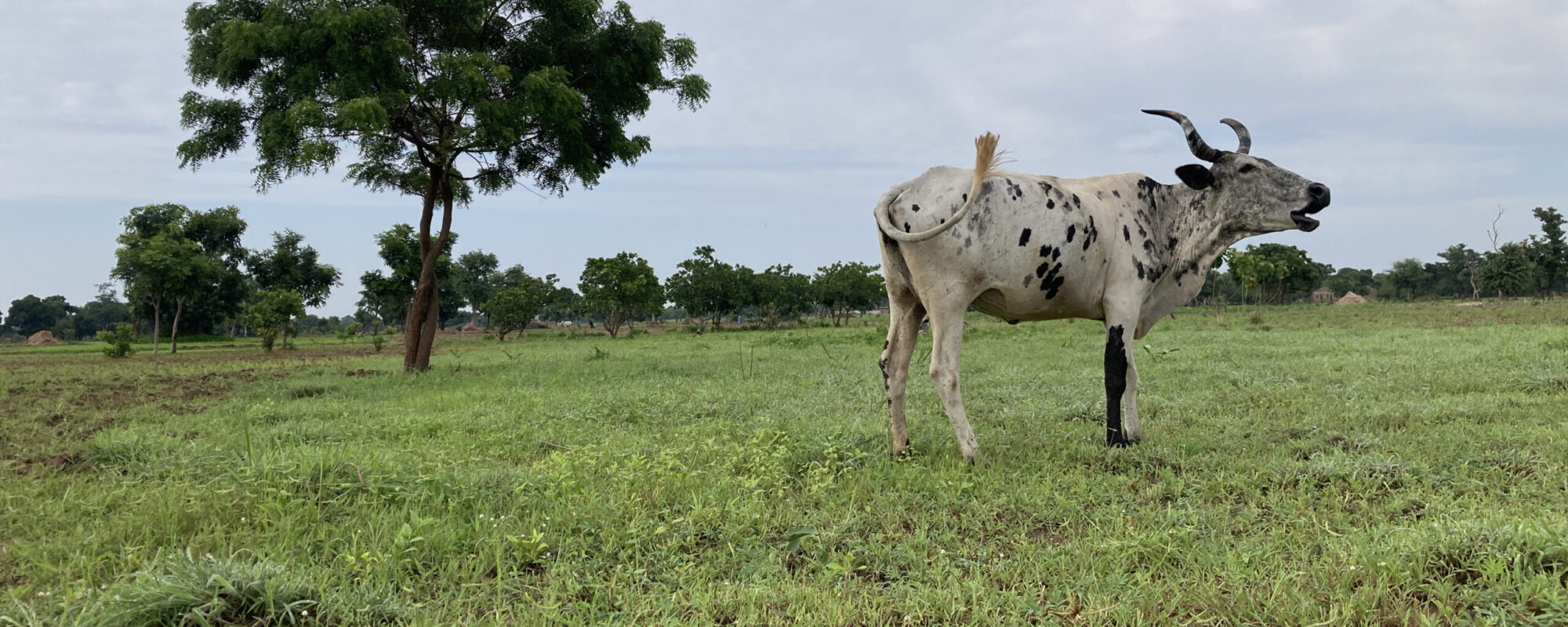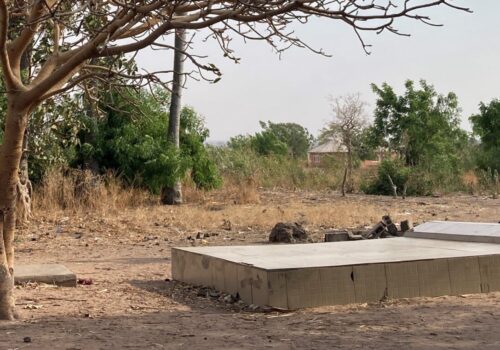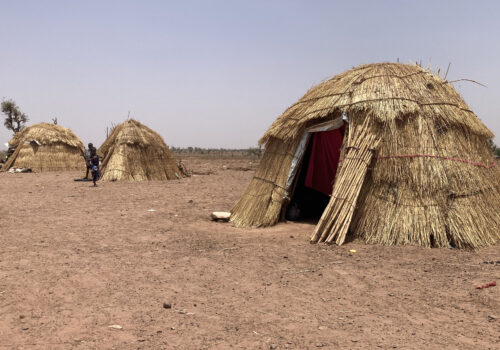GOGOUNOU, Benin — “Allah gave Fulbe women raw milk,” Binta Yero said as she stirred curdling milk in a cauldron, barely breaking a sweat in the humid midday heat. “We transform the milk and sell it to ease our suffering.”
I met with Binta and a group of middle-aged Beninois women in a hamlet outside this small town in northern Benin. Over two days, I saw how wagashi, or “Fulbe cheese” was made, tasted the fermented milk known in Benin as faniré, and drank more than my fill of biiradam, or fresh milk.
I came to this region to research these traditional dairy products. However, once here, I was intrigued to learn that despite deep traditions and burgeoning demand, most local production remains artisanal. Looking into failed attempts to industrialize dairy production in Gogounou, I found a complicated story of ill-fitted aid projects and European trade policy that have relegated local production to a survival strategy for some of the country’s most marginalized communities.
Dairy production in northern Benin is almost exclusively the domain of women from the minority Fulbe ethnic group. Fulbe arrived in what is now Benin around three centuries ago with their herds of cattle, sheep and goats. While some settled permanently, others continued their semi-nomadic existence. Both sedentary and nomadic Fulbe maintained their deep connection to livestock, however, using dairy diplomacy—exchanging dairy products for grains and goodwill—to ingratiate themselves with neighboring communities.
In a small hamlet on the outskirts of Gogounou, the middle-aged Halimatou Bakujo patiently explained what to her are the basic fundamentals of daily life. All dairy products, she said, start with fresh milk. Only cows with young calves produce milk. While men own the cattle, women own and sell dairy products.
As we spoke, a white cow with curved horns was brought back from her early morning pasture and her calf allowed to suckle at her udder to stimulate the flow of milk. After a few minutes, the calf was taken off but kept near the cow. “It makes the cow feel more comfortable when her calf is close,” Halimatou’s son Boubacar explained.
He crouched down and started squeezing the udders, grasping his hands rhythmically to mimic the calf’s mouth. As thin jets of milk shot into a plastic bucket balanced between his knees, Boubacar made small clicks and whistles to calm the cow. Ten minutes later, he gave the bucket, filled with around a liter of milk, to his mother and allowed the calf back on the cow’s udder.
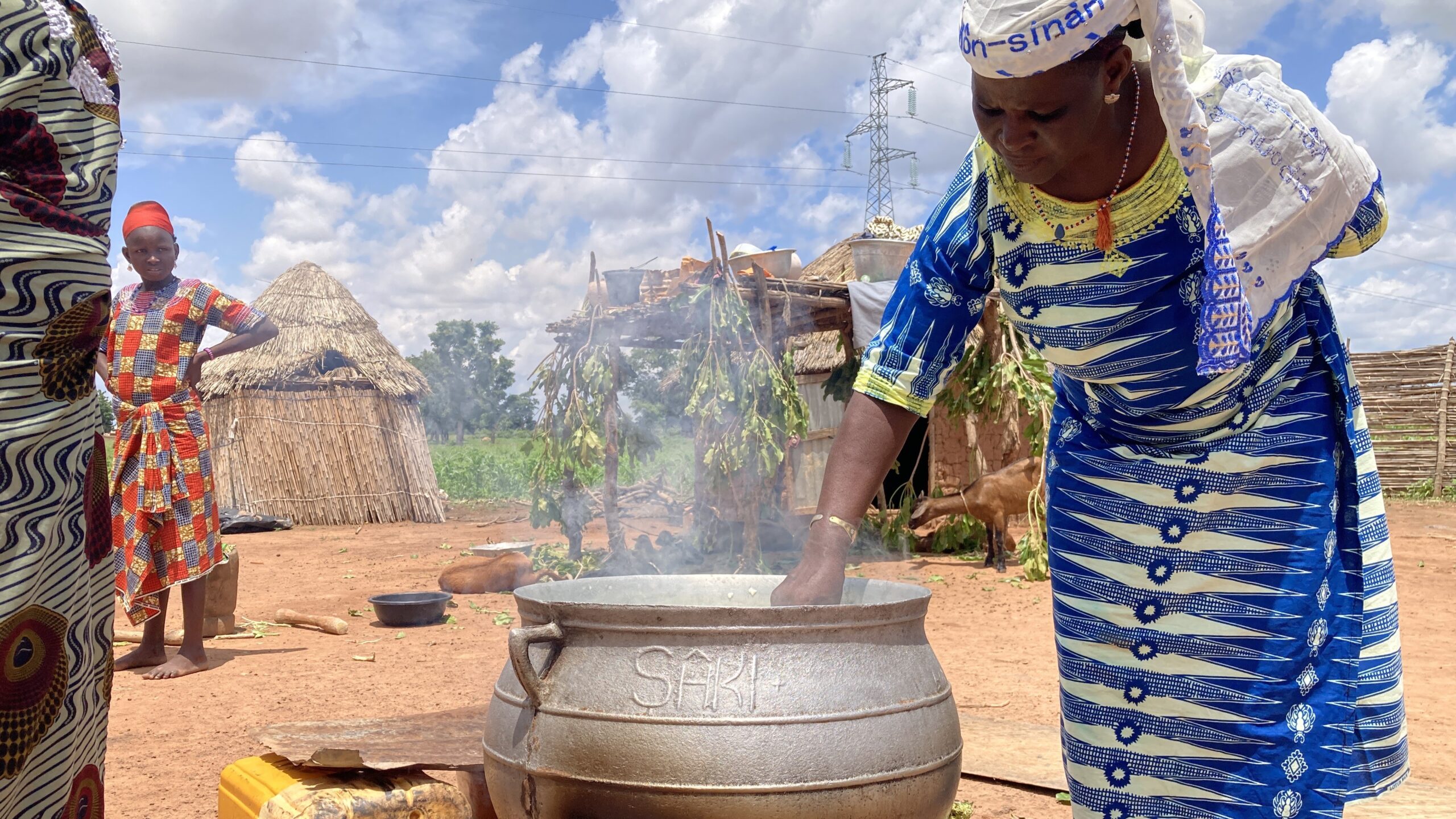
After Halimatou poured the warm milk through a fine mesh strainer, she washed up and hopped on the back of her brother-in-law’s motorcycle bound for Gogounou’s market. For the next few hours, she and half a dozen other women from the surrounding communities set up shop on a sturdy wooden table near the market’s entrance.
To a capitalist’s eye, concentrating vendors selling the same item in one place would not seem to maximize profit. However, Halimatou and her friends’ decisions are informed by more than just sales. Gathering in the market is an opportunity to visit with friends and swap information. They often help each other, directing clients to friends who have sold less on this or that morning. “If I were alone in another part of town, I would get lonely,” Halimatou said. “This way if I need to go shopping or look after my child, one of my friends can still sell my milk.”
The women rarely sell all their raw milk in one morning. With what remains, they produce a number of subsidiary products such as faniré (fermented milk) and wagashi (soft cheese).
Fermented milk is a common product across West Africa. In some places, it is made by slightly heating fresh milk to kickstart fermentation, then allowing it to cool over 24 hours. Halimatou does not go to all that trouble. Instead, she just leaves the fresh milk out for around a day to allow the natural enzymes to ferment. If stored in a cool place, it will keep for another two or three days before it spoils.
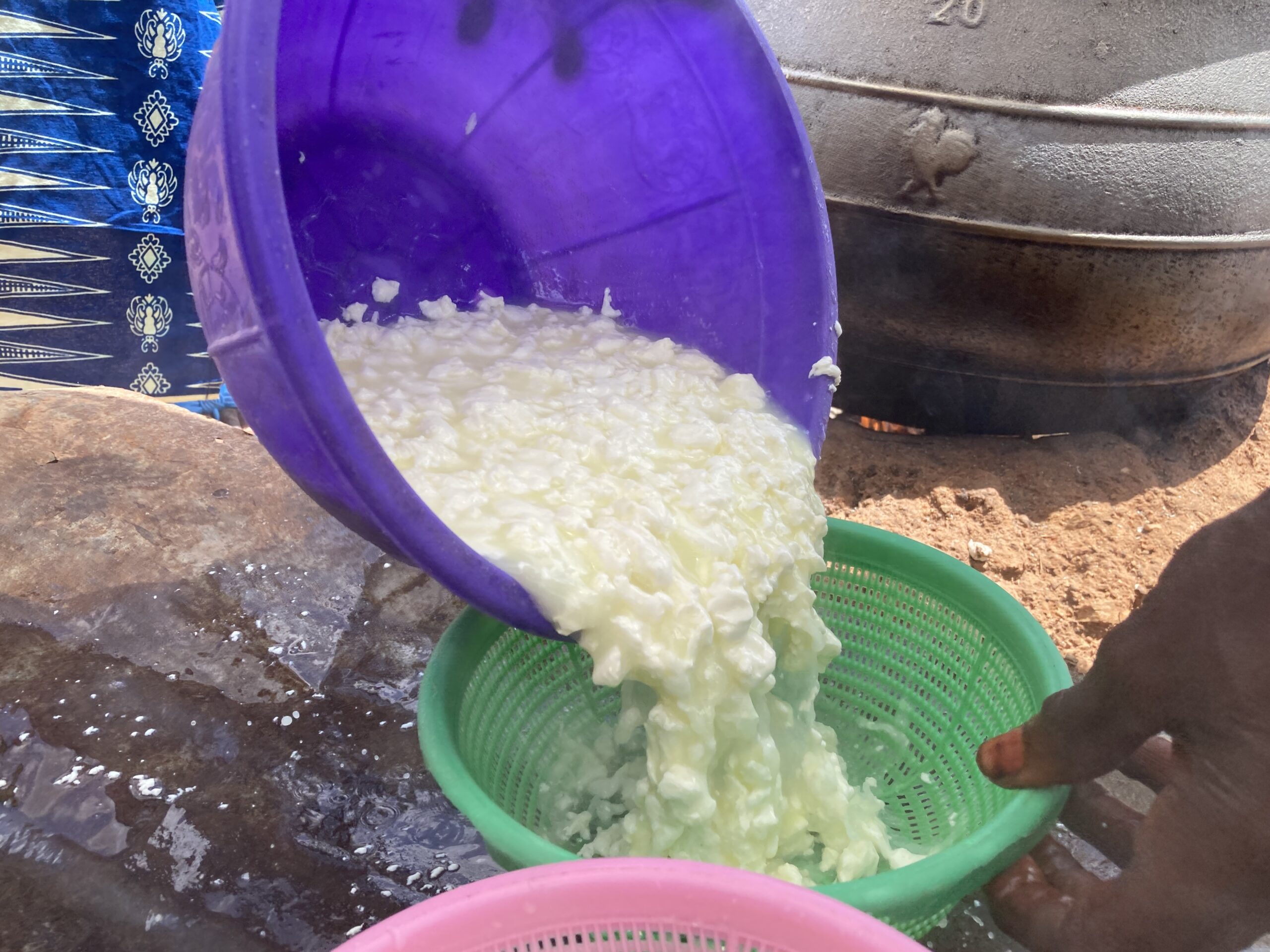
Not everyone has the stomach for faniré, she admitted, which is often comprised of thick globules and has a sour taste that sticks to the back of your throat. “Those who buy faniré in the market really like it,” she said. “They’re regulars.”
While fermented milk is common across the Fulfulde speaking world, wagashi is a specialty of northern Benin and its immediate neighbors. To teach me more about the soft cheese, Halimatou introduced me to Binta Yero. A quiet elderly matriarch with a serious gaze, she is widely regarded as the most knowledgeable about wagashi.
By the time I arrived in her village outside Gogounou, Binta and her companions had already combined their milk—making wagashi is best in large batches and thus is usually a communal event—in a large cauldron and started slowly heating it over a fire. I watched as they scooped a bowlful of warmed milk from the cauldron and mixed in a few crushed-up leaves from the common calotropis procera plant, which acts as a coagulant. After straining out the leaf matter, they poured the chemically altered milk back into the warming cauldron.
After an hour of bubbling away at a low boil, the white curds separated from the yellow whey and Binta announced it was time for the next step. The cauldron was suddenly a hive of activity as women began skimming the curds and pouring them into brightly colored strainers. As the curds cooled, the congealing masses were delicately flipped a few times to remove excess water, then laid out to dry in the sun. After 15 minutes, the cauldron was empty and around 20 rolls of freshly produced cheese were sitting in the sun.
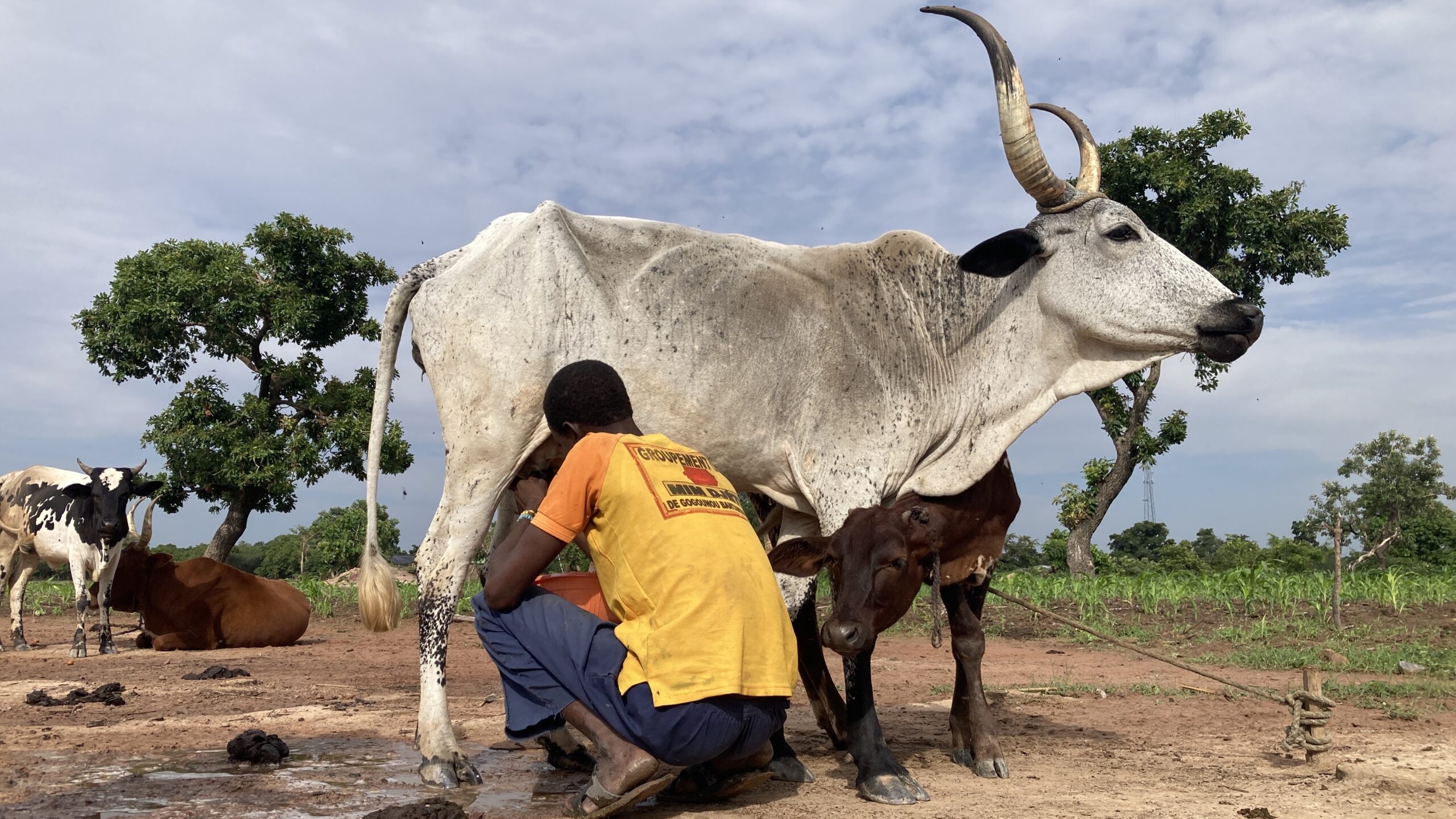
I left Binta and Halimatou full of both dairy and admiration for their deep knowledge. Yet I also wondered why dairy production here is still almost completely artisanal, meaning made entirely by hand. Despite all the raw milk supplies, virtuoso knowledge and clear demand, why had multiple attempts to develop the local industry—which would generate much appreciated income here—failed over the years?
* * *
Looking for some answers led me to the dilapidated headquarters of the Dairy Cooperative Society of Gogounou (known by its French acronym SOCOLAIG). Past its nondescript tan gate stood a faded structure with grass growing in the gutters. The building’s rooms were filled with industrial milk heaters, freezers and tables stacked with strainers, empty bottles, scales and various mixing bowls. Everything was clean—except for a thick layer of dust. In one room, a young man, a relative of the mayor’s, was cleaning spoiled milk from a plastic bottle that had exploded from fermentation gases.
This mini-dairy production facility and half-a-dozen like it had once been part of an effort to help Benin meet its dairy demand locally. At the time, less than half the milk produced in the country came from local cattle. The first incarnation of the project was established in Gogounou in 2006 with funding from the United Nations Food and Agriculture Organization. Over 41 months, $405,000 were distributed through the Beninois government and a Fulbe association called ANOPER to build a processing center and establish collection sites in rural areas.
Guera Barkissou was in her early 20s when she started working at SOCOLAIG in 2006. She described how trainers were brought in from Madagascar and Cameroon to teach her and the handful of other employees how to use the newly purchased equipment to transform raw milk into butter, flavored milk and cheese, and package it. She then worked with half-a-dozen women’s groups to establish collection centers in rural areas for raw milk to supply the factory. She also helped the women’s groups acquire sieves and other materials that could be used to improve their artisanal wagashi production.
“There was a sentiment of joy when SOCOLAIG opened,” she said. “At first, everyone in town came to buy our products.”
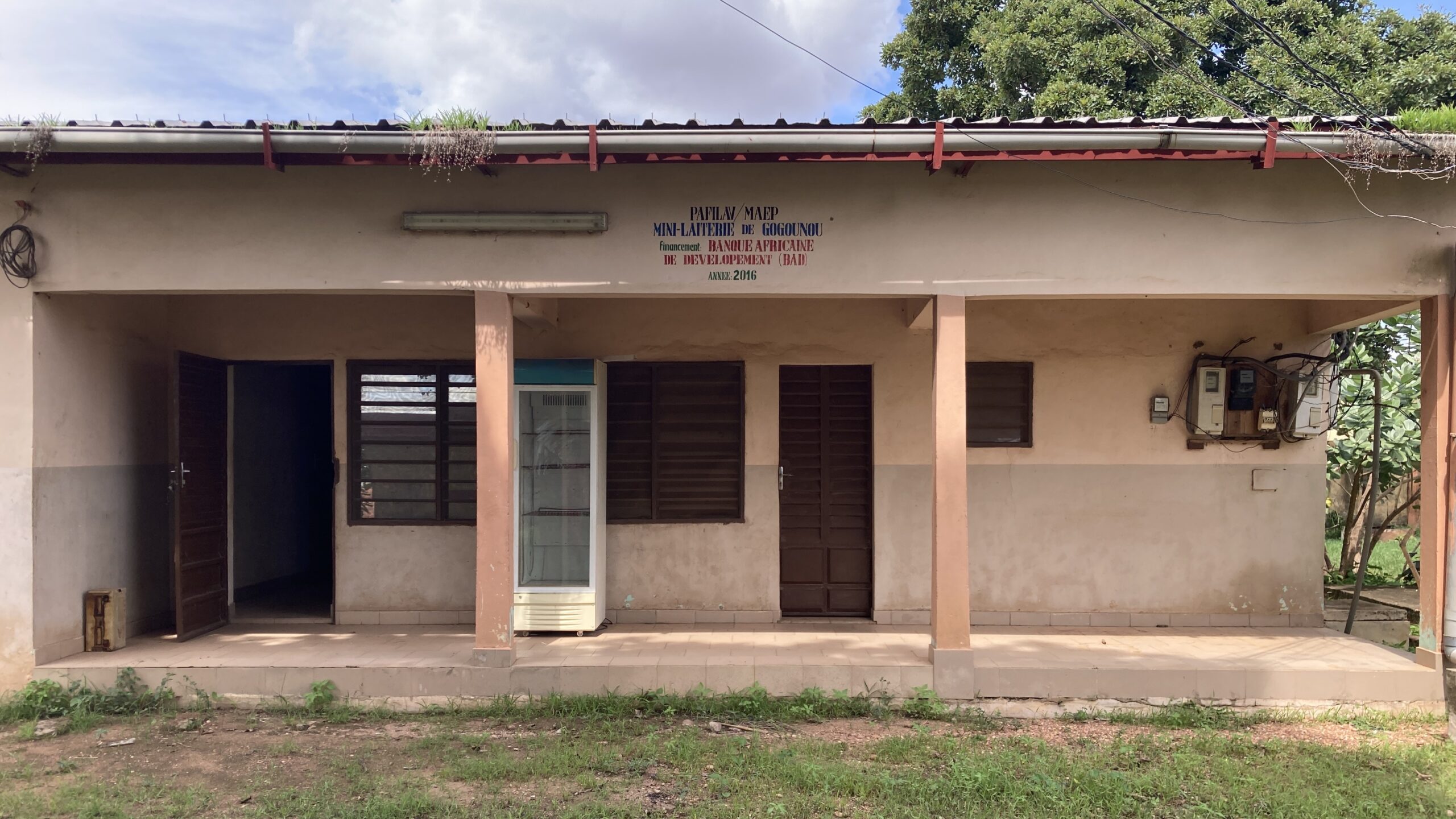
However, the mini-dairy closed after a few years for unclear reasons. Djobo Sidi, who kept reminding me that he could speak authoritatively only about what happened after he became president of the association responsible for running the facility in 2016, told me he thought the closure was caused by a broken part. A young man peripherally associated with the project reported employees were unable to collect enough fresh milk to keep the facility operating. Guera, on the other hand, said the factory closed when she and other employees quit after not being paid.
However, SOCOLAIG’s limited success did not stop it from receiving additional development funding. In 2016, Gogounou’s mini-dairy was among dozens of local projects supported by a decade-long project funded by the African Development Bank targeting the meat and milk sectors. (No publicly available figures for the amount appear to exist.) The money was directed through the same government entities and local associations as before. New transformation machines were bought, the building was renovated and the rural collection centers were “re-animated.”
Even though Guera was still frustrated about her unpaid salary, she agreed to work after the re-opening as a short-term consultant. For a few months, she taught the new team how to transform and package products and how the rural collection system was supposed to work. But the re-opening was just an infusion of cash into the same structure that had previously failed, she told me. She left when her contract expired, and the facility closed a few months later, she said.
There are multiple explanations for why Gogounou’s mini-dairy failed to take off. Many of the men associated with the project claim the issue has always been declining milk production in the area related to outmigration of Fulbe herders. According to Djobo, they have had less land for their cattle as farmers have increased their field sizes, and have moved to other parts of Benin. The Beninois sociologist Georges Djohy confirmed that basic thesis in his book Pastoralism and Socio-technological Transformations in Northern Benin, in which he concludes that expansion of crop farming has led to exclusion of Fulbe who cope by migrating.
Besides lacking enough raw milk, Djobo said, SOCOLAIG never made enough revenue to cover expenses. Even when the mini-dairy was functioning, he said, it never generated enough money to cover raw materials and employees’ paychecks. The facility’s managers were not trained in business and never secured any regular large clients. “Development help is good,” he said, “but we need proper management like an entrepreneur who can do marketing.”
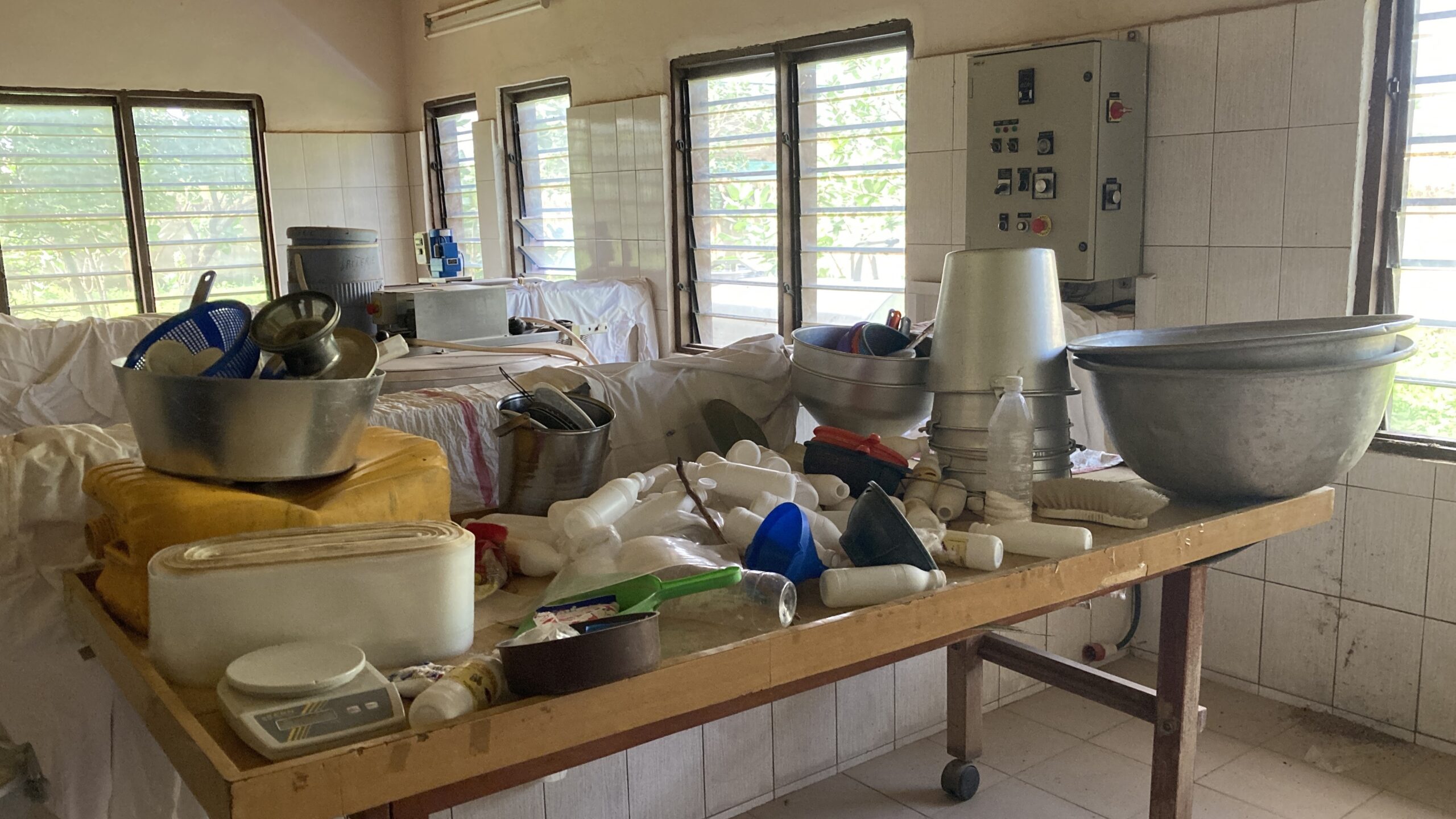
Asked why SOCOLAIG was never self-sufficient, Guera did not pull any punches: bad management and embezzlement of funds. “They would say we lost 10 liters of product when we really lost only one,” she said. “It was very demoralizing for us workers.”
Furthermore, she added, while the factory is technically closed now, local ANOPER leaders sometimes re-open for short stretches to complete small orders, with relatives of management volunteering to collect the milk and do the transforming.
When I brought these allegations to Djobo, he again stressed that he knew nothing about what was happening before he became president. He admitted that the facility does sometimes operate for short orders and that those completing them are volunteers. Although the two sides clearly disagreed on some issues, I sensed the same disappointment that nothing had come of all the money invested despite the potential.
I later realized another crucial structural factor no one had mentioned. It was only when I looked into the basic economics of Benin’s (and most of West Africa’s) dairy industry that I learned that most products consumed in Benin are made using European milk powder. It turns out that due to European dairy subsidies and lack of import tariffs, making milk and yogurt in Benin using European milk powder (often combined with vegetable oil) is much cheaper than any product even a well-managed SOCOLAIG could produce. SOCOLAIG, as it turns out, was likely doomed from the start.
* * *
Binta and Halimatou were fairly nonchalant about SOCOLAIG’s failure. Asked what the advantages of the mini-dairy had been, they replied that the rural collection centers had made it easier to sell their milk and they had appreciated the sieves and other small items provided. They did not say it explicitly, but I got the impression that they were not surprised that the project never realized its goals. They had long ago learned they could not rely on foreign funders or even their own government to substantially improve their lives.
That brought me back to local dairy traditions, I realized as I left Gogounou. As various government initiatives come and go, artisanal traditions passed down from mother to daughter still provide an essential lifeline for people like Binta and Halimatou. Remembering that Binta had told me it was Allah who had given women milk, I found myself summing up their situation by adapting an American saying: “When Allah gives you milk, make wagashi.”
Top photo: A cow enjoying early morning pasture

